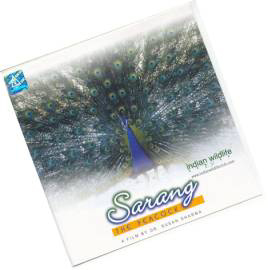Indian Classical Music
Geeta
Verghese
Ancient Indians believed that depending on the time of the day or night, our body and mind
undergoes subtle changes, which arouses and stimulates different moods and emotions. The Ragas in Indian Classical Music are based on this daily cycle of changes. Each Raga is associated with a definite mood or sentiment that nature arouses in human beings.
The ancient musicologists were interested in the effects of musical notes, how it effected and enhanced human behavior. Music had the power to cure, to make you feel happy, sad or disgusted. The ragas, which have evolved over centuries, help us rediscover
some of the subtle states that are part of our natural world - both outside our doors and inside ourselves. It is this unique blending of the vibrations of ragas and nature that helps give Indian music its magical quality.
There are Ragas associated with each of the different seasons. Some of the ragas linked
with the different seasons are given below:
Raga
and
Ritu (Seasons):
-
Bhairav Shishir (winter)
Hindol Vasant (spring)
Deepak Grishma(summer)
Megh/Malhar Varsha (monsoon)
Malkauns Sharad (autumn)
There are also ragas associated with different times of the day, enhancing the mood
evoked by the changes that occur as day fades into night. Ragas that capture the mystery and wonder of the pre-dawn hour and Ragas, ideally performed at "the first light of the sun," which encompass the diverse moods of peace, joy and pathos. Ragas performed
"when the sky begins to become red in the afternoon," which embody the elegance, beauty and pathos of a day slowly coming to an end.
An Indian musician has to undergo years of practice to achieve a certain level of perfection.
Swara, the Sanskrit word for tonal center, forms the fundamental basis for the Indian path of music. Swara suggests tunefulness, a tunefulness that arises from within, spontaneously and without force. There is of course technique, however underlying the technique
there must be an internal ease, which is neither too concentrated nor diffused. This is the reason why years are devoted to cultivating tunefulness through posture, breath control, and concentration. The manifestation of swara brings along with it a natural
calming of internal movement and a corresponding tuning of our own body, mind and energy as a musical instrument. Without this fundamental relaxation of internal movement and a wider opening to the surrounding space, swara remains as a lifeless corpse. As
the musician no longer tries to improve, modify, control, or in any way alter his natural tunefulness, the swara takes on a life of its own and resonates without any limit in its clarity and power, pervading his entire being and the space around him.
Legends have grown around great musicians who have been able to achieve such tunefulness.
It is said that when Tansen the famous musician at Emperor Akbar’s court sang the Raag Deepak it caused a fire in the area of performance. The fire was doused when another musician sang Raag Malhar, which in turn brought rain. Such then is the power of music,
which can alter the very course of nature.

Buy
a Music video CD of Sarang The Peacock! This short film is a visualization of two Hindustani ragas “Megh” and “ Sarang”